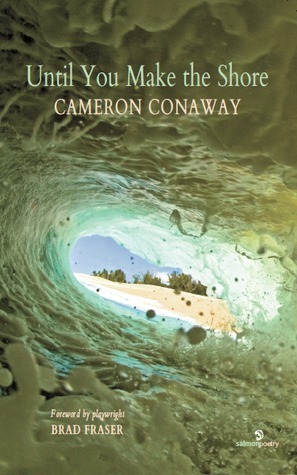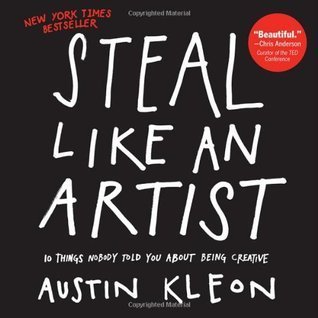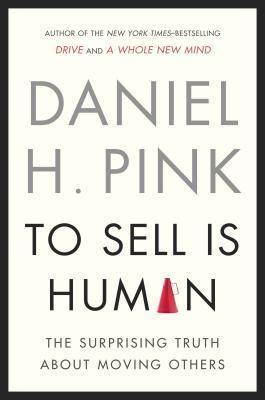Clifford Garstang's Blog, page 62
July 8, 2014
2014 Reading: Life Before Life by Jim B. Tucker
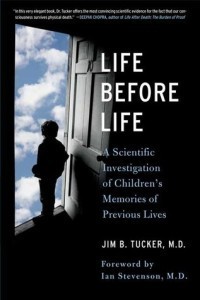 Life Before Life: Children’s Memories of Previous Lives
Life Before Life: Children’s Memories of Previous Lives
Jim B. Tucker, M.D.
St. Martin’s, 2005
Dr. Tucker recently spoke at my local bookstore. I was interested in attending but had a conflict. I did however, pick up one of his books and have just read it. The book doesn’t claim to prove reincarnation, but it does offer considerable evidence for it in the form of the statements by children of their memories of previous lives. Many cases are offered, and these are, apparently, just a small sampling of the data that Dr. Tucker and his colleagues have amassed.
The cases reported include birthmarks or birth defects that somehow reflect the mode of death of the “prior personality,” or experimental birthmarks that are placed on the prior personality’s body and then carry over, or other memories that are in various ways “verified.” As a good rhetorician, Dr. Tucker also addresses both the objections to the evidence and the alternative explanations, concluding in most cases that reincarnation offers the most logical explanation for the cases.
The author includes an entire chapter to the issue of materialism, and the objection based on the fact that only the material world exists. But, he argues, our knowledge of physics is evolving, and some physicists now acknowledge that materialism may not be all that there is.
It’s all very interesting to me. On the one hand, I am a firm believer in the material world until another form of existence is proven. On the other hand, I find the notion of reincarnation extremely attractive.
When I was in high school, using hypnosis to achieve past life regressions was something of a fad. One of my friends was able to get a local dentist who was a hypnotist to come to small gathering in her basement and to “put us under” to see what he could learn about our past lives. I don’t recall specifics, but some of our group did offer details of past lives. My recollection is that I did not.
Anyway, I’m still fascinated by the subject and now, having read this book, I need to do some more reading.
July 5, 2014
Hambidge — Week 2
 Hambidge—Week 2 (Tuesday-Saturday)
Hambidge—Week 2 (Tuesday-Saturday)
I’ve been here a whole week already! I guess I haven’t set the world on fire with the writing, but I’ve made progress, so that’s something. I’ve been sleeping pretty well, I think because the rain stopped and so has the all-night dripping on the roof. While I like the soothing sound of the rain, the irregularity of the dripping is disconcerting. Might be the reason. That and finally getting used to being here.
Dinner on Tuesday felt smaller because the dance troupe left on Sunday. One new person came and another is coming tomorrow, but we had only 8 at dinner. On Wednesday, Jamie Boudoud, the Executive Director of Hambidge, came up from Atlanta and joined us for dinner. He apparently does this most weeks, which is nice. On Friday, the 4th of July, Brian the chef gave us a break from the usual vegetarian fare. The vegetarian stuff is good and imaginative, but the burgers were excellent. And now it’s the weekend again, and time for eating at home or meeting to share leftovers.
After dinner on Tuesday night, some of us went over to Chris’s studio to see and hear the instruments he’s been working with here, including a viola da gamba and two other smaller instruments. A nice bit of entertainment before settling back into my studio to work, which for me in the evening is reading.
My poison ivy has subsided somewhat and I’ve acquired some long sleeve t-shirts, so I was able to go walking in the woods again. On Thursday I followed the Hambidge Trail and explored the main part of the “campus”—some very cabins over there. (I’m in a cottage that is on the other side of the road.) On Friday I walked the Anselm Trail, in part because it’s the closest one to my cottage. It winds around above the studio and then connects with the Cove Forest Trail down by the creek.
A few people are leaving this weekend, to be replaced on Tuesday by new residents. One more week for me.
New Reviews of What the Zhang Boys Know
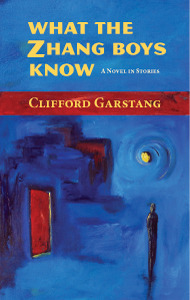 Recently, a couple of reviews of What the Zhang Boys Know have appeared. I’ve always been advised not to read reviews, but, well, too late.
Recently, a couple of reviews of What the Zhang Boys Know have appeared. I’ve always been advised not to read reviews, but, well, too late.
A review by Denton Loving appeared in Pank Magazine, which you can read in full here. After summarizing a couple of the stories and taking a stab at what the themes of the book might be, he ends with:
“What The Zhang Boys Know is only Garstang’s second full-length publication, but it’s a beautiful, thought-provoking read that further assures a bright future for a talented writer.”
Laura Azzi reviewed the book on Alice Osborn’s blog. She concludes with this:
“Each chapter of this book is a short story that goes deep into the lives of this building’s inhabitants. These stories are not a light walk through life but rather thought-provoking and often life changing narratives that are both personal and universal. Garstang allows the reader to find their own truth through fictional truth and in doing so, I believe the reader will find a morsel of themselves within each story.”
I appreciate the reviews and hope that they encourage others to read the book.
2014 Reading: The Man Who Walked Away by Maud Casey
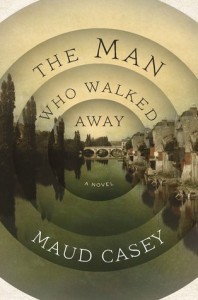 The Man Who Walked Away
The Man Who Walked Away
by Maud Casey
Bloomsbury 2014
Maud Casey was part of a panel on book publicity at the Virginia Festival of the Book this year. I’ve been hearing about her for years but haven’t read her work, so I took the opportunity to get her new book, The Man Who Walked Away. It’s unlike anything I’ve ever read. Kudos to Bloomsbury for publishing such a lyrical, literary book.
The book is a fictionalized account of a real case treated by a real doctor in a late 19th Century Bordeaux asylum. In the novel, “the Doctor” (never named) treats his most interesting patient, Albert, a young man (about twenty, we’re told, although he doesn’t seem that young). Albert has a problem of wandering away and waking up in strange places not knowing how he got there. Meanwhile, it’s the early days of psychiatry, and the Doctor does what he can to treat Albert and the other patients in the asylum (and deal with his own problems). The Doctor frequently visits Paris where he and other doctors attend demonstrations by “the great doctor,” including one that introduces the idea of hypnosis in treating hysteria and other forms of mental illness. The Doctor decides to give it a try with Albert.
Not much happens in the book in the way of plot, although both Albert and the Doctor have complex backgrounds that Casey explores beautifully. The language throughout is exquisite. Christine Schutt calls the book “ensorcelling.” What? (It means “bewitching.”)
July 3, 2014
2014 Reading: Until You Make the Shore by Cameron Conaway
Cameron Conaway
Salmon Poetry, 2014
This book came as something of a surprise. I’ve known Conaway for a few years, first introduced by the poet Todd Davis. We stayed in touch and I enjoyed his book Caged: Memoirs of a Cage-fighting Poet, which came out in 2011. I know that he spent the next couple of years in Thailand doing some very interesting work in both human rights and poetry. But we ran into each other earlier this year at the AWP Conference in Seattle where he was launching Until You Make the Shore, his new poetry collection from Salmon Poetry. I bought it, he signed it for me, and I have just managed to make time to read it.
Not what I was expecting. (Which was what? I don’t know—martial arts? Thailand?) The book is an impressive series of poems in the voices of four female inmates of the Pima County Juvenile Detention Center, with the voice of the poet inserted as the creative writing instructor of the four young women. These very powerful voices come through loud and clear. They tell very dark stories, each different and yet disturbingly the same—what they have done, what’s been done to them, what has happened in their homes.
What Conaway has done here is very exciting, I think. The book includes a foreword by the playwright Brad Fraser, and that seems entirely appropriate to me. It isn’t at all difficult to imagine this book staged, maybe with the instructor in the middle, surrounded by the four women, each telling their story through their poems. I’d like to see that.
Well done, Cameron Conaway.
2014 Reading: Unitl You Make the Shore by Cameron Conaway
Cameron Conaway
Salmon Poetry, 2014
This book came as something of a surprise. I’ve known Conaway for a few years, first introduced by the poet Todd Davis. We stayed in touch and I enjoyed his book Caged: Memoirs of a Cage-fighting Poet, which came out in 2011. I know that he spent the next couple of years in Thailand doing some very interesting work in both human rights and poetry. But we ran into each other earlier this year at the AWP Conference in Seattle where he was launching Until You Make the Shore, his new poetry collection from Salmon Poetry. I bought it, he signed it for me, and I have just managed to make time to read it.
Not what I was expecting. (Which was what? I don’t know—martial arts? Thailand?) The book is an impressive series of poems in the voices of four female inmates of the Pima County Juvenile Detention Center, with the voice of the poet inserted as the creative writing instructor of the four young women. These very powerful voices come through loud and clear. They tell very dark stories, each different and yet disturbingly the same—what they have done, what’s been done to them, what has happened in their homes.
What Conaway has done here is very exciting, I think. The book includes a foreword by the playwright Brad Fraser, and that seems entirely appropriate to me. It isn’t at all difficult to imagine this book staged, maybe with the instructor in the middle, surrounded by the four women, each telling their story through their poems. I’d like to see that.
Well done, Cameron Conaway.
July 2, 2014
Tips for Writers: Learn “Buoyancy” in the face of rejection
 Tips for Writers: Learn “buoyancy” in the face of rejection
Tips for Writers: Learn “buoyancy” in the face of rejection
I have a writer friend who moderates a private online discussion called R.I.P – Rejection Isn’t Personal. The point of the group is to remind the participants that the writers who get published are the ones who didn’t give up. It’s a crucial point to remember.
Coincidentally, I’ve just read Dan Pink’s book, To Sell is Human, which I discussed in general terms here. The book begins with the notion that these days more and more of us are in sales, whether were actually engaged in selling a product or we’re trying to convince someone of an idea.
Writers, it seems to me, do both. In a chapter called “Buoyancy,” Pink discusses the “ocean of rejection” that people involved in sales face. Staying afloat in the face of that ocean—buoyancy—is one of the essential attributes of effective sales.
Pink breaks buoyancy down a little differently than I’m going to, but there are essentially three elements that I think work for writers.
First, enter the process of submitting your work not with arrogance—“this is the best story ever written”—but with a mixture of confidence (otherwise, what’s the point of getting out of bed?) and humility, asking yourself, “Is this the right market for me?” Second, to the extent possible, surround yourself with positivity. You can’t manufacture acceptances of your work, but you can spend some of your time interacting with positive experiences—friends who understand you and appreciate your work, for example. If you dwell on rejection all the time, that’s going to be a downer, so you need to have some balance in your writing life. The third element is perhaps the most directly applicable to what we do as writers—don’t explain rejection to yourself as “permanent, pervasive, and personal.” It’s not any of those things. And that’s what brought my friend’s R.I.P. discussion to mind. Develop an optimistic view of your rejections—they are temporary, rather than permanent; specific, rather than universal; and external, rather than personal.
Pink also suggests sending yourself a rejection letter before you even submit your work. Anticipate what the editor/agent/publisher might say about your story. List the reasons the work is being rejected, including the irritating phrases we all hate in rejection letters. (Ironically, writing the rejection may help you identify some soft spots in the work you are submitting, so you can strengthen it before you do the real submission.)
And if you don’t want to write your own, Pink refers us to the Rejection Generator Project at http://ow.ly/cQ5rl. Check it out. As if you don’t get enough rejection letters already.
The book has another chapter that writers may find useful, one on pitches, and I’ll do another post about that in the near future. In the meantime, I recommend the book, and if you have a chance to catch Pink speak in person, go for it. He’s both entertaining and, er, persuasive.
July 1, 2014
Hambidge–Days 5 and 6
I didn’t sleep well last night and listened to night sounds—was that rain on the roof, or critter footsteps? At one point I heard something in the kitchen and got up to check. It was a very small bug that was jumping every few seconds and making an inordinate amount of noise for its size. Goodbye, bug. Sorry.
I may have to go over to the Rock House today just so I can read the newspaper online. What’s happening in the world?
I made a trip into Clayton looking for an outfitter store so I could get a long-sleeve T. Didn’t find one, but I did find a Wal-Mart. They didn’t have what I was looking for.
Hambdige—Day 6 (Monday)
Guess what? It’s raining!
It has rained most of the day. During a break midafternoon I went over to the Rock House to check email—Stephanie and Allison came by while I was there—and then I ran into Dillard for cellphone reception and to pick something up at the store.
I have accomplished a fair amount today—writing in the novel and also some blog posts—but I realized I’d gotten off track from my outline a bit. One nice thing about Scrivener is that won’t be hard to reorganize the scenes I’ve written to fit the outline, which I think I will need to do before I write the next bit. Part 1 of the novel is just about done. I’d love to finish Part 2 (of 3 parts) before I leave here on the 13th.
p.s. If you’re sensitive to poison ivy, don’t look at this picture too closely.
2014 Reading: Steal Like an Artist by Austin Kleon
by Austin Kleon
Workman, 2012
I picked this book up on a recent visit to the Art Institute of Chicago (I think it was AIC—I’ve been to a lot of art museum gift shops lately) because I was intrigued by the cover, the title, and the subtitle: “10 Things Nobody Told You About Being Creative.”
Actually, if you’re an artist already, you’ve probably already been told a lot of these things, and you may even have concluded that some of them are bogus, or at least not something that will work for you (that’s okay, according to Kleon).
Congratulations to Kleon for getting this book published and getting people like me to buy it. The book was an evening’s amusement, and not as frustratingly repetitive as some other books on creativity, like, say The Artist’s Way, which I’m also burrowing through at the moment. And there are some good reminders here about some techniques for enhancing your own creativity. One in particular that I like is “Climb your own Family Tree.” The idea is to focus on one artist you love and learn everything there is to know about that person. Then find three people that artist loved and find out everything you can about them. I think many of us take the first step, but we might not take the second. I think I have begun climbing several trees but usually get down from the first branch and move to the next tree.
Here’s another tip from the book: Be Nice (The world is a small town). And one way of being nice is to say nice things about people on the Internet. Which is what I’m doing now. I enjoyed this Kleon guy’s book. You might also. His website has some cool stuff on it, too: www.austinkleon.com.
June 30, 2014
2014 Reading: To Sell is Human by Daniel H. Pink
by Daniel H. Pink
Riverhead, 2012
I’m not in the habit of reading business books, but this one sounded intriguing. Besides, I’ve heard Pink speak a few times and I read and appreciated his previous book, Drive, so I’d been looking forward to reading this one.
The basic idea of the book is that these days most of us are engaged in selling of one kind or another, especially if you think of “selling” as more than just pushing product. If you’re in the business of moving people, then you’re selling—choices, lifestyles, ideas, candidates, whatever.
When I practiced law, I was doing both “selling” in a more traditional sense—trying to convince clients and potential clients to buy our services—and “non-sales selling”—trying to persuade counterparts in a transaction or regulatory bodies to decide in a client’s favor. In my work at the World Bank I was mostly engaged in negotiations of one kind or another, and that’s nothing if it isn’t selling. (In fact, Pink does give a nod to Roger Fisher, author of Getting to Yes, the negotiations book that I found very helpful in the work I did in that field. Much of what Pink is saying is a corollary of the principled negotiation style fostered by Fisher.)
And now, of course, the world of sales is a much bigger part of my life than I’d like it to be. There’s the non-sales selling aspect—simply trying to engage a reader through the words—but there are literal sales to worry about as well: sales of stories to magazines, selling (through an agent, often) to publishers, selling published books to bookstores or readers. So don’t tell me a writer isn’t in sales.
Through a number of case studies and a review of interesting research in the field, Pink follows the evolution of our thinking about sales—this is surprisingly interesting stuff, especially in the engaging way that Pink writes—and concludes with some actual recommendations for effective sales techniques. (For example, it might surprise you to learn that the most effective salespeople are somewhere in the middle on the spectrum of introversion and extroversion, or an area that Pink calls “ambiversion.”) He also has some very specific ideas about creating effective pitches, and it is in this area that the book is most relevant for writers.
I’ll be doing a separate “Tips for Writers” post based on those ideas, so stay tuned.

